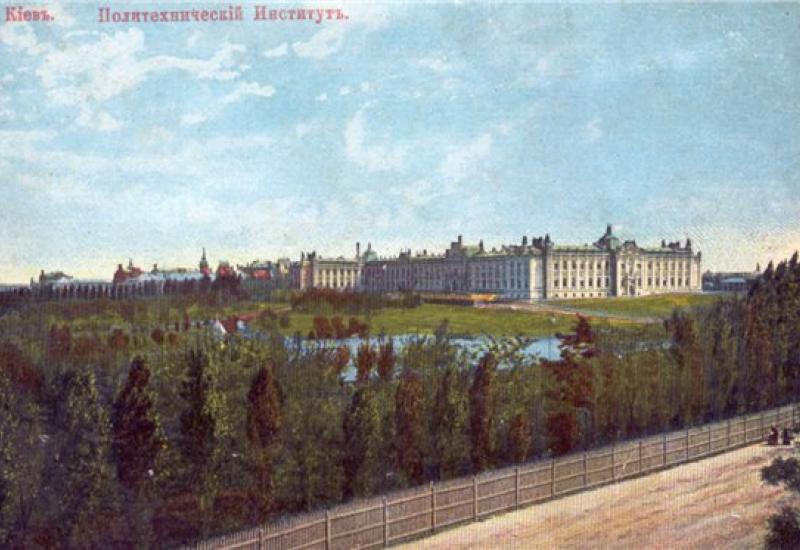Shuliavka which is more than 100 years ago gave shelter NTUU "KPI", has a long and interesting history. It was first mentioned in chronicles in the twelfth century. It is not surprising, therefore, that it is associated with numerous Kiev stories and traditions. One of these traditions is the celebration of the first day of May. This is not about May Day "demonstrations of workers" of the Soviet Union. And it is not about worker’s "May Day" pre-October period of the twentieth century, which were often connected with danger to participants. - It is about honoring the last month of spring, which was arranged by the people of Kiev in the green surroundings of the city.
This tradition came to Ukraine from the West. There a cult of good goddess of the earth and fertility of ancient Latins Maya (or otherwise Mayesty), in whose honor it was even named last month of spring, together with the Roman legions conquered the whole of Europe. Over time, the custom of the May festivities and entertainment in the woods and groves, weird and poetic rituals using fresh flowers and green tree branches became familiar not only for the natives of the warm Mediterranean countries, but also for the people of the harsh rocks of the Scandinavian peninsula.
Bright spring welcoming ceremonies existed there once at the ancient Slavs, so foreign holiday, imported into the country, together with scientists from Latin books and customs, first found its supporters among those to whom these books were intended, ie, spudeev (students, in modern language) and seminarians, and later - and among the urban population, especially the educated.
In Kiev, the tradition of "maevka" arose during the Hetmanship. It was quickly caught on and, moreover, became common among the students and residents of the city even after the demise of the Kyiv-Mohyla Academy. However, in the current forms this holiday was celebrated exactly by the students of the Academy, which in early May even were freed from the study and released on the "recreation". Recreation (from the Latin "rest") took place in May, three times: the first day, the fifteenth and thirtieth. But the main holiday was still "May Day". By the way, the word "May" and its derivative "May Day" were then familiar to Ukrainian and often appeared in the literature (modern Slavic names of the months borrowed from folk dialects became in Ukrainian language widespread much later). "May Day" festivities were carried out first on the mountain Skavika, better known as Schekavitsa. After Schekavitsa became the city cemetery, and the metropolitan country house was built in Shulyavka they conducted at Shulyavka groves on the banks of Lybed.
The students of the Academy carefully prepared for May recreations: poetry teacher should write to them annually comedy or tragedy, and the other teachers - create dialogs. All these students were practicing and then played in front of professors invited to the feast, the prefect and the rector of the Academy and the Metropolitan of Kiev.
The ceremony was also attended by the Governor, the vicar and "third-party lovers of Sciences," or, more simply, Kiev inhabitants. The latter "lovers of Sciences", by the way, the students took in the company only for "gifts" to the glory and the development of "scientific wisdom." It was usually a keg of beer or boiled honey. It was acceptable also, as the famous explorer Ukrainian customs Alex Voropai wrote, "roasted boar, bacon, fresh tortillas and other evidence of the same kind of commitment to science."
An integral part of the celebration were musical numbers, because the teaching of music and singing at the Academy was at a very high level.
But, nevertheless, a major attraction of the holiday was, of course, rest on the hard everyday learning and fun entertainment with the ball, bowling and singing chants.
May Day was honored after the decline of the Academy for many years. There is an evidence that in the late XIX century, the first of May Kiev residents gathered on the green hills of Shuliavka and arranged funny (sometimes, as noted by contemporaries, even too funny!) picnics. However, in a few years this area has gradually turned into a district of industrial buildings and gardens one by one disappeared, leaving only strange for the factory edge street names - "The first line of garden", "garden Second Line" and so on. They were renamed already in the sixties of the twentieth century.
Dmitry Stefanovic

